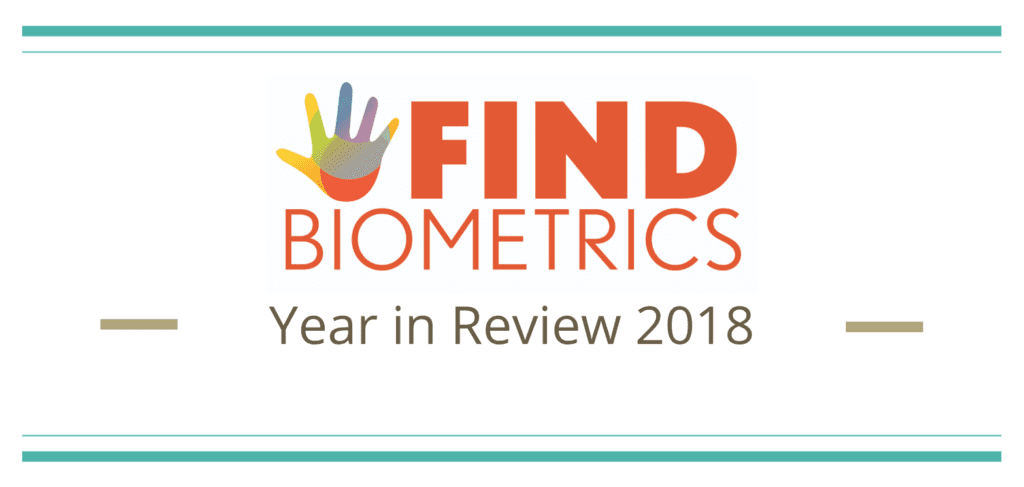
The 2018 FindBiometrics Year in Review survey and analysis is complete. Through our month-long analysis of the survey results via featured articles, interviews and the inaugural Mobile ID World podcast, the stage has been set for 2019 in terms of what trends we can expect to carry though the coming months.
But the festivities aren’t done yet. To offer even more perspective on the year that was and what’s to come in 2019, we asked the companies who participated in the Year in Review survey to give us their viewpoints on the biometrics industry.
Here is what out respondents had to say:
–Read part one of our Year in Review Industry Speaks coverage–
Invixium (responses from Shiraz Kapadia, CEO & President, Invixium)

FindBiometrics: What was your company’s biggest accomplishment in 2018?
I think Invixium’s greatest accomplishment this year was our launch at ISC West in Las Vegas, what I consider to be the “Olympics” of the security and access control industry. Despite being in business for five years prior to this year, we waited to launch our brand in North America for good reason. We wanted to have a complete product portfolio along with a list of integrations with prominent access control manufacturers under our belt before promoting ourselves to the North American Access Control market.
Since the show, we’ve had tremendous interest in our products and solutions globally, specifically for IXM TITAN, our multimodal facial, fingerprint, finger vein recognition device. With the increasing interest in facial recognition the demand is not surprising, as TITAN is truly unique and has really helped open up new markets for biometrics and Invixium, markets where traditional biometric solutions have not worked; outdoor, rugged environments like construction sites, sea ports, mines, power plants or oil refineries and not solely for access control but for workforce management opportunities as well.
FindBiometrics: What is the greatest opportunity facing the biometrics industry?
The greatest opportunity that stands before the industry is simplification of the channel which will require the entire industry to become more streamlined. Biometrics for physical access control is up against card and fob readers, keys and pin pads, which are not very intelligent and give an impression of security and are relatively inexpensive. In order for an enterprise or a medium sized business owner to upgrade to biometrics to secure the doors to their office will require tremendous incentive and one phone number to call to guide them from start to finish.
Why don’t we have a “blockchain” concept for biometrics? Why hasn’t the “door-to-desktop” application for biometrics taken off? Currently, I feel that it’s either it’s too expensive or too complicated and more work needs to be done.
Our contribution as a manufacturer is to develop solutions that are easy-to-install, easy-to-use and are multipurpose so that other functions required at the door (i.e. intercom, surveillance, time tracking) are consolidated. And by doing that, I think the market recognizes the value that we are bringing to the industry and the response that we have received this year has been very receptive.
FindBiometrics: What does your company have in store for 2019?
We are working feverishly towards the next version of our software IXM WEB 2.0. It’s going to have a whole new refreshing UX with a software module for enterprise level time tracking and workforce management features. We think that all small-to-medium business owners would love that, a consolidated software for both access control and time and attendance of their employees. And down the road, I would like for Invixium to offer hosting services to these small businesses just like how some companies outsource their IT services.
There are also new markets for us to penetrate and fulfill our global expansion aspirations, like Latin and South America, but we will definitely continue building on the momentum that we have achieved in North America. And of course, we will be there again at ISC West in Las Vegas.
NuData (responses from Robert Capps, VP, Business Development, NuData)
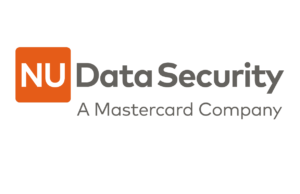
FindBiometrics: What was your company’s biggest accomplishment in 2018?
This past year, NuData and Mastercard have worked hard to finalize a fully integrated solution that gives merchants access to the new protocol, 3DS 2.0, and to NuData’s four layers of intelligence at checkout, as a unified package.
The combination of these two products gives merchants more control and trust over their transactions as they get the pre-transaction fraud evaluation and to decide if they want to send the transaction through the 3DS rails to be authenticated or, if there is a high degree of trust, to send the transaction directly without using the 3DS path – and thus reducing the chances of a step up on that user.
This combined solution is a way to give merchants and issuers the tools to improve security and streamline their customer’s experiences. Better customer experience benefits issuers, merchants, and acquirers, so this is our way to acknowledge the industry flaws and help all parties move toward a better payment ecosystem.
FindBiometrics: What is the greatest opportunity facing the biometrics industry?
The greatest opportunity for biometrics is its use for user identification, not just for Convenience.
Today, most companies and financial institutions allowing users to verify themselves with their biometrics do so to offer a convenient experience to users. Companies use biometrics to grant access to the account after comparing the user’s biometrics to the previously-stored biometrics. This allows the user to access their account but does not mean that the fingerprint belongs to the legitimate user. For instance, a device that can be unlocked with a fingerprint allows you to store several fingerprints.
Let’s say Mary registers her own fingerprint but also her family’s fingerprints so that they can access her phone or account. Then, when an approved fingerprint is used to access an online service it doesn’t mean it’s actually Mary, but an approved fingerprint. The biometric login step here is used for convenience but does not confirm that the presented fingerprint belongs to the user. Still, this is a powerful way to provide security and is successfully protecting users and companies from fraud worldwide, but the biometrics technology also offers the opportunity to identify who exactly is behind the device and this is a path that will continue to evolve in 2019.
FindBiometrics: What does your company have in store for 2019?
We are pretty excited for the new solutions in the docket as we innovate our technology to address current and upcoming industry pain points. I’d like to point out two use cases we will be focusing on in the beginning of 2019: enhanced device-based identification and application fraud.
NuData’s universal identifier shifts the industry’s idea of device identification technology. As opposed to only attempting to bind a single device to a financial institution (FI) account, the NuData solution builds out a signal identifier that tracks the identity of a user or multiple users including multiple devices, behavior, connection, and passive biometrics, linked to a single FI account identifier. It acts as an entity that encompasses different variables of the authorized user or users’ behavior.
We will also release our online account origination solution: This highly sophisticated product protects companies from online account origination or application fraud by leveraging all our extensive sets of data to accurately identify fraudulent patterns at the account creation placement. By analyzing every attack and anomaly at an extremely granular level and also at the sub-population level, our solution blocks new account fraud with extreme accuracy, protecting companies from future fraud and losses.
As fraud evolves and new authentication challenges arise, we work hard at NuData to understand the new attacks, build new capabilities and products and make sure our clients stay ahead of the fraud curve.
Trueface (responses from Shaun Moore, CEO & Founder, Trueface)

FindBiometrics: What was your company’s biggest accomplishment in 2018?
Our biggest accomplishment of 2018 was a waterfall of continued growth in all facets of our business from funding to client growth. We improved our solutions by simplifying integrations and extended our product offering which has driven an exponential increase in new business and our team.
FindBiometrics: What is the greatest opportunity facing the biometrics industry?
At Trueface, the biggest opportunity we are actively addressing is closing the gap of implicit bias that is currently affecting the industry. We are training our models using proprietary datasets that we collect from all over the world as well as synthetic data that will improve bias, making facial recognition a societal benefit for all.
FindBiometrics: What does your company have in store for 2019?
In 2019, we will build off our momentum from this year and continue to make our partners safer and smarter. By innovating in locally hosted computer vision solutions, model training, and data collection, we are building a future where the responsible use of facial recognition will lead to the mass adoption and benefit of this technology.
Onfido

FindBiometrics: What was your company’s biggest accomplishment in 2018?
We achieved a growth this year of 342 percent in 2018. Another big accomplishment for us was being one of the founding members of the Better Identity Coalition.
FindBiometrics: What is the greatest opportunity facing the biometrics industry?
We think that a great opportunity for biometrics is enabling more remote services to be more secure and, provided with the right consent, provide better privacy.
FindBiometrics: What does your company have in store for 2019?
Continued growth as well as being a key thought leader and expert in the market around facial liveness and privacy.
Aratek
FindBiometrics: What was your company’s biggest accomplishment in 2018?
Aratek’s mobile biometric terminals helped deliver a number of big projects across the globe such as SIM card registration, National ID, voter verification, financial services, and time attendance.
FindBiometrics: What is the greatest opportunity facing the biometrics industry?
As the smartphone market matures and handsets become increasingly affordable, mobile biometrics companies are starting to take advantage of their supply chain and manufacturing ability. From a hardware standpoint, we will see smaller and lighter devices. From a software perspective, we will see these miniaturized devices running apps that can perform industrial-grade jobs without the need to invest in additional hardware. This revolution is happening as we speak.
FindBiometrics: What does your company have in store for 2019?
Aratek just launched Marshall, a fingerprint scanner which promises to revolutionize “identify-anywhere.” It seamlessly integrates with various FBI-certified fingerprint scanners such as FAP20, FAP30, or FAP 45, afforded users utmost flexibility. It also has a built-in printer which allows generation of paper-receipts indispensable in many remote applications.
We are very excited about Marshall being the go-to biometric solution for financial services, social welfare distribution, voter registration and authentication, census, SIM card activation, and mobile Time and Attendance Management.
We are also incubating a lot of exciting things in our labs, one of which is our cloud identity management rental service. This is aimed squarely at organizations which need identity management but do not have the capability to run it themselves. Our vast experience is something that we can leverage into providing managed services that make a difference for our customers.


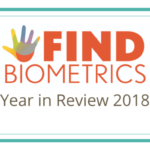
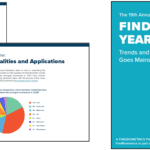

![ID Talk at ISC West 2022: Hear the Identity Experts at Security’s Biggest Show [UPDATED]](https://idtechwire.com/wp-content/uploads/ISC-West-2022-Crowd-150x150.jpg)

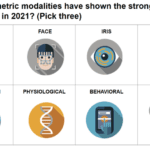
Follow Us